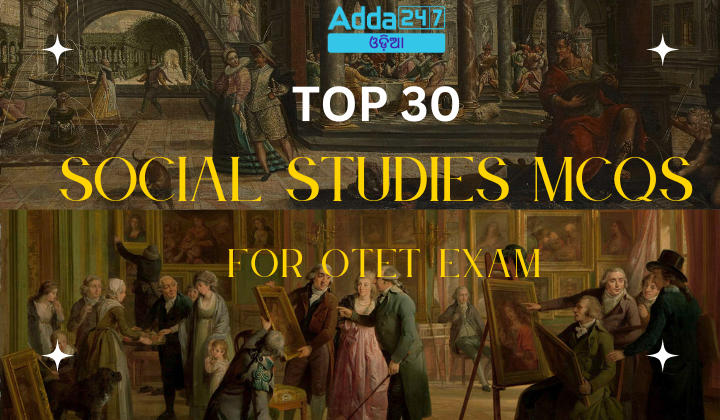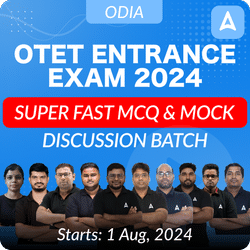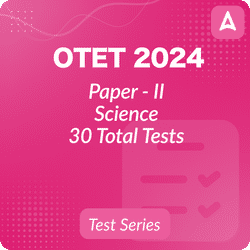Preparing for the OTET exam can be streamlined by focusing on key areas within Social Studies, such as History, Political Science, and Geography. These 30 multiple-choice questions cover crucial topics like the historical periods of the Sultanate, Mughal, and British rule, key figures and events in Indian nationalism, the structure and provisions of the Indian Constitution, and the physical and cultural geography of Odisha. By mastering these questions, candidates can enhance their understanding and increase their chances of success in the OTET exam.
Top 30 Social Studies MCQS For OTET Exam
- Which of the following is an example of a renewable resource?
(a) Fossil fuels
(b) Minerals
(c) Wind
(d) Coal
Ans. (c) Wind - Which type of resource is characterized by being exhaustible and not easily replenished?
(a) Renewable resources
(b) Non-renewable resources
(c) Sustainable resources
(d) Replenishable resources
Ans. (b) Non-renewable resources - What is one of the main differences between renewable and non-renewable resources?
(a) Renewable resources can be exhausted quickly, whereas non-renewable resources can be replenished easily.
(b) Renewable resources are available in infinite quantity, whereas non-renewable resources have a limited supply.
(c) Renewable resources have a high cost, while non-renewable resources are low-cost.
(d) Non-renewable resources can be replenished quickly, while renewable resources cannot.
Ans. (b) Renewable resources are available in infinite quantity, whereas non-renewable resources have a limited supply. - Which resource is essential for supporting life on Earth and is covered 70% of the planet?
(a) Soil
(b) Air
(c) Water
(d) Iron
Ans. (c) Water - What is a key environmental benefit of forests?
(a) They provide high-cost resources.
(b) They are mainly used for building construction.
(c) They help preserve the ecology and provide clean air.
(d) They exhaust rapidly and are non-renewable.
Ans. (c) They help preserve the ecology and provide clean air. - Which of the following resources can be replenished quickly and is considered low-cost and environment-friendly?
(a) Coal
(b) Water
(c) Iron
(d) Soil
Ans. (b) Water - Which resource is used extensively in building strong structures and transportation?
(a) Air
(b) Forests
(c) Iron
(d) Water
Ans. (c) Iron - What is a characteristic feature of non-renewable resources?
(a) They replenish quickly.
(b) They are available in infinite quantity.
(c) They are exhaustible and cannot be renewed once depleted.
(d) They are environment-friendly and low-cost.
Ans. (c) They are exhaustible and cannot be renewed once depleted. - Why is soil considered a vital natural resource?
(a) It is used to produce iron.
(b) It supports the growth of plants by providing essential nutrients.
(c) It covers most of the Earth’s surface.
(d) It helps in water purification.
Ans. (b) It supports the growth of plants by providing essential nutrients. - Which of the following is NOT a primary concern associated with non-renewable resources?
(a) High cost
(b) Environmental impact
(c) Infinite availability
(d) Limited stock
Ans. (c) Infinite availability - Who established the Ganga Dynasty in Odisha?
(a) Anantavarman Vajrahasta V
(b) Chodagangadeva
(c) Narsimhadeva I
(d) Rajaraja II
Ans. (a) Anantavarman Vajrahasta V - Which ruler is credited with building the world-famous Sun Temple at Konark?
(a) Anangabhimadeva III
(b) Rajaraja II
(c) Narsimhadeva I
(d) Bhanudeva IV
Ans. (c) Narsimhadeva I - What architectural style was prominent during the Ganga Dynasty?
(a) Dravidian
(b) Nagara
(c) Chola
(d) Indo-Saracenic
Ans. (b) Nagara - During whose reign did the poet Jayadeva flourish?
(a) Narsimhadeva I
(b) Anangabhimadeva III
(c) Rajaraja II
(d) Anantavarman Vajrahasta V
Ans. (c) Rajaraja II - Which Gajapati ruler founded the dynasty and expanded Odisha into a vast empire?
(a) Prataparudra Deva
(b) Purushottam Deva
(c) Kapilendra Deva
(d) Kakharua Deva
Ans. (c) Kapilendra Deva - Who was the last ruler of the Gajapati Dynasty?
(a) Kapilendra Deva
(b) Purushottam Deva
(c) Prataparudra Deva
(d) Kakharua Deva
Ans. (d) Kakharua Deva - Which ruler concluded a peace treaty with Krishnadevaraya in 1512 AD?
(a) Kapilendra Deva
(b) Prataparudra Deva
(c) Purushottam Deva
(d) Bhanudeva IV
Ans. (b) Prataparudra Deva - What was the capital of the Gajapati Dynasty?
(a) Kataka-Pattana
(b) Cuttack
(c) Puri
(d) Simhachalam
Ans. (a) Kataka-Pattana - Which temple was built by Anangabhimadeva III?
(a) Sun Temple at Konark
(b) Jagannath Temple
(c) Mukteswara Temple
(d) Lingaraj Temple
Ans. (b) Jagannath Temple - Who was defeated by Prataparudra Deva in 1522 AD?
(a) Krishnadevaraya
(b) Quli Qutb Shah
(c) Mahmud Shah
(d) Govinda Vidyadhara
Ans. (b) Quli Qutb Shah - Who was the founder of the Slave (Ghulam) or Mamluk Dynasty in the Delhi Sultanate?
a) Aram Shah
b) Qutb-ud-din Aibak
c) Shams-ud-din Iltutmish
d) Razia Sultana
Ans. b) Qutb-ud-din Aibak - Which ruler was the eldest son of Qutb-ud-din Aibak?
a) Shams-ud-din Iltutmish
b) Aram Shah
c) Razia Sultana
d) Nasiruddin Mahmud
Ans. b) Aram Shah - Who was the son-in-law of Qutb-ud-din Aibak and ruled from 1211 to 1236?
a) Ruknuddin Feruz Shah
b) Ghiyas-ud-din Balban
c) Shams-ud-din Iltutmish
d) Muizuddin Bahram
Ans. c) Shams-ud-din Iltutmish - Who succeeded Shams-ud-din Iltutmish and ruled for a short period in 1236?
a) Razia Sultana
b) Muizuddin Bahram
c) Ruknuddin Feruz Shah
d) Alauddin Masud
Ans. c) Ruknuddin Feruz Shah - Who was the daughter of Iltutmish and ruled from 1236 to 1240?
a) Razia Sultana
b) Ghiyas-ud-din Balban
c) Nasiruddin Mahmud
d) Muiz ud din Kaiqubad
Ans. a) Razia Sultana - Which ruler was known for being the most powerful leader of the Slave Dynasty and ruled from 1266 to 1286?
a) Muizuddin Bahram
b) Ghiyas-ud-din Balban
c) Nasiruddin Mahmud
d) Kaimur
Ans. b) Ghiyas-ud-din Balban - Who was the son of Ghiyas-ud-din Balban and ruled from 1287 to 1290?
a) Aram Shah
b) Muiz-ud-din Kaiqubad
c) Alauddin Masud
d) Kaimur
Ans. b) Muiz-ud-din Kaiqubad - Who was the son of Muiz-ud-din Kaiqubad and ruled briefly in 1290?
a) Ruknuddin Feruz Shah
b) Nasiruddin Mahmud
c) Kaimur
d) Razia Sultana
Ans. c) Kaimur - Who was the ruler who died in 1229, a brother of Razia Sultana?
a) Ghiyas-ud-din Balban
b) Nasiruddin Mahmud
c) Muizuddin Bahram
d) Shams-ud-din Iltutmish
Ans. b) Nasiruddin Mahmud - Which ruler succeeded Razia Sultana and ruled from 1240 to 1242?
a) Shams-ud-din Iltutmish
b) Ruknuddin Feruz Shah
c) Alauddin Masud
d) Muizuddin Bahram
Ans. d) Muizuddin Bahram
















